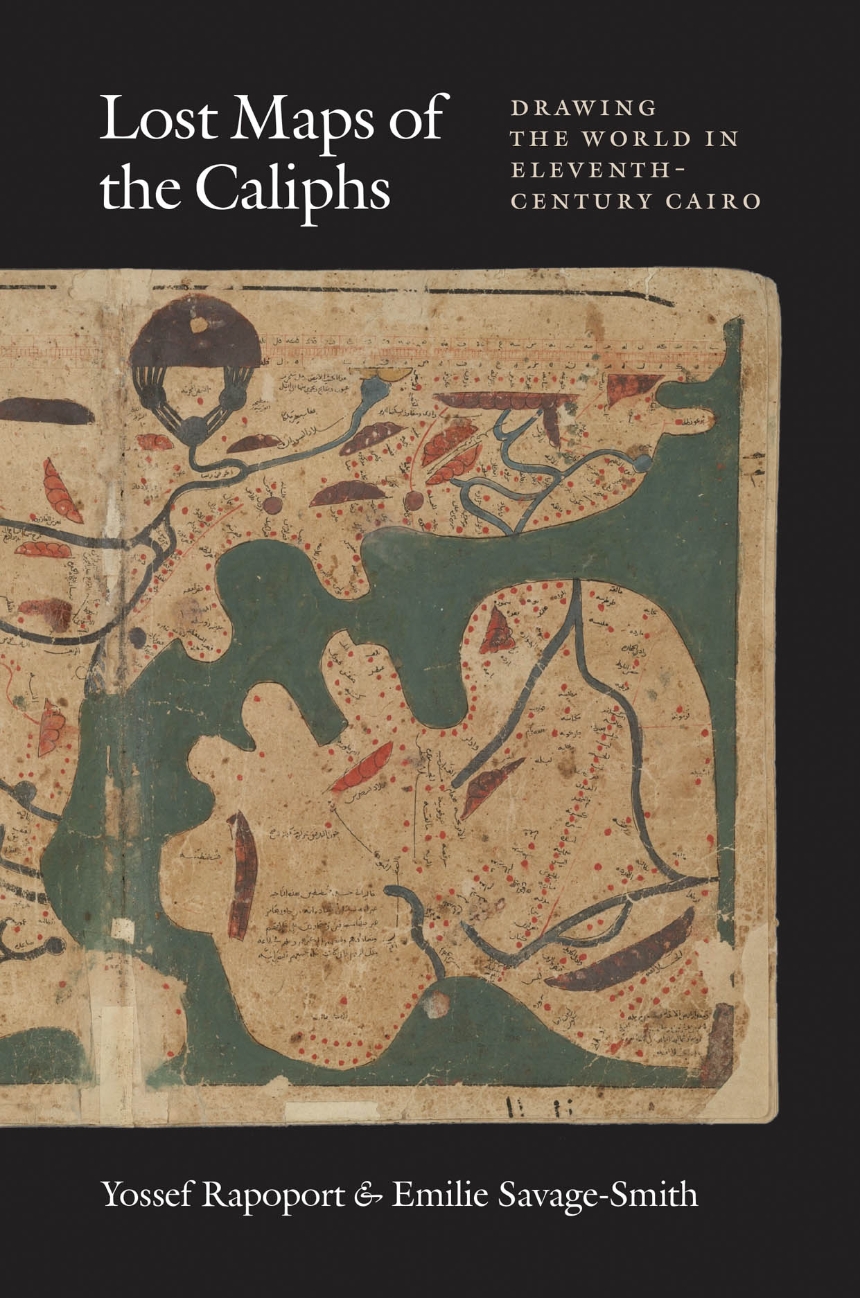Lost Maps of the Caliphs
Drawing the World in Eleventh-Century Cairo
About a millennium ago, in Cairo, an unknown author completed a large and richly illustrated book. In the course of thirty-five chapters, this book guided the reader on a journey from the outermost cosmos and planets to Earth and its lands, islands, features, and inhabitants. This treatise, known as The Book of Curiosities, was unknown to modern scholars until a remarkable manuscript copy surfaced in 2000.
Lost Maps of the Caliphs provides the first general overview of The Book of Curiosities and the unique insight it offers into medieval Islamic thought. Opening with an account of the remarkable discovery of the manuscript and its purchase by the Bodleian Library, the authors use The Book of Curiosities to re-evaluate the development of astrology, geography, and cartography in the first four centuries of Islam. Their account assesses the transmission of Late Antique geography to the Islamic world, unearths the logic behind abstract maritime diagrams, and considers the palaces and walls that dominate medieval Islamic plans of towns and ports. Early astronomical maps and drawings demonstrate the medieval understanding of the structure of the cosmos and illustrate the pervasive assumption that almost any visible celestial event had an effect upon life on Earth. Lost Maps of the Caliphs also reconsiders the history of global communication networks at the turn of the previous millennium. It shows the Fatimid Empire, and its capital Cairo, as a global maritime power, with tentacles spanning from the eastern Mediterranean to the Indus Valley and the East African coast.
As Lost Maps of the Caliphs makes clear, not only is The Book of Curiosities one of the greatest achievements of medieval mapmaking, it is also a remarkable contribution to the story of Islamic civilization that opens an unexpected window to the medieval Islamic view of the world.
Lost Maps of the Caliphs provides the first general overview of The Book of Curiosities and the unique insight it offers into medieval Islamic thought. Opening with an account of the remarkable discovery of the manuscript and its purchase by the Bodleian Library, the authors use The Book of Curiosities to re-evaluate the development of astrology, geography, and cartography in the first four centuries of Islam. Their account assesses the transmission of Late Antique geography to the Islamic world, unearths the logic behind abstract maritime diagrams, and considers the palaces and walls that dominate medieval Islamic plans of towns and ports. Early astronomical maps and drawings demonstrate the medieval understanding of the structure of the cosmos and illustrate the pervasive assumption that almost any visible celestial event had an effect upon life on Earth. Lost Maps of the Caliphs also reconsiders the history of global communication networks at the turn of the previous millennium. It shows the Fatimid Empire, and its capital Cairo, as a global maritime power, with tentacles spanning from the eastern Mediterranean to the Indus Valley and the East African coast.
As Lost Maps of the Caliphs makes clear, not only is The Book of Curiosities one of the greatest achievements of medieval mapmaking, it is also a remarkable contribution to the story of Islamic civilization that opens an unexpected window to the medieval Islamic view of the world.
368 pages | 25 color plates, 89 halftones | 6 x 9 | © 2018
Geography: Cartography
Physical Sciences: History and Philosophy of Physical Sciences
Religion: Islam
Reviews
Table of Contents
Introduction
Chapter 1: A Discovery
Chapter 2: Macrocosm to Microcosm: Reading the Skies and Stars in Fatimid Egypt
Chapter 3: The Rectangular World Map
Chapter 4: The Nile, the Mountain of the Moon, and the White Sand Dunes
Chapter 5: The View from the Sea: Navigation and Representation of Maritime Space
Chapter 6: Ports, Gates, Palaces: Drawing Fatimid Power on the Island-City Maps
Chapter 7: The Fatimid Mediterranean
Chapter 8: A Musk Road to China
Chapter 9: Down the African Coast, from Aden to the Island of the Crocodile
Chapter 10: The Book of Curiosities and the Islamic Geographical Tradition
Conclusion: Maps, Seas, and the Ismaʿili Mission
Chapter 1: A Discovery
Chapter 2: Macrocosm to Microcosm: Reading the Skies and Stars in Fatimid Egypt
Chapter 3: The Rectangular World Map
Chapter 4: The Nile, the Mountain of the Moon, and the White Sand Dunes
Chapter 5: The View from the Sea: Navigation and Representation of Maritime Space
Chapter 6: Ports, Gates, Palaces: Drawing Fatimid Power on the Island-City Maps
Chapter 7: The Fatimid Mediterranean
Chapter 8: A Musk Road to China
Chapter 9: Down the African Coast, from Aden to the Island of the Crocodile
Chapter 10: The Book of Curiosities and the Islamic Geographical Tradition
Conclusion: Maps, Seas, and the Ismaʿili Mission
Appendix: A Technical Discourse on Star Lore and Astrology
Acknowledgments
References
Notes
Index
Acknowledgments
References
Notes
Index
Awards
Choice Magazine: CHOICE Outstanding Academic Title Awards
Won
History of Science Society: Pfizer Award
Short Listed
